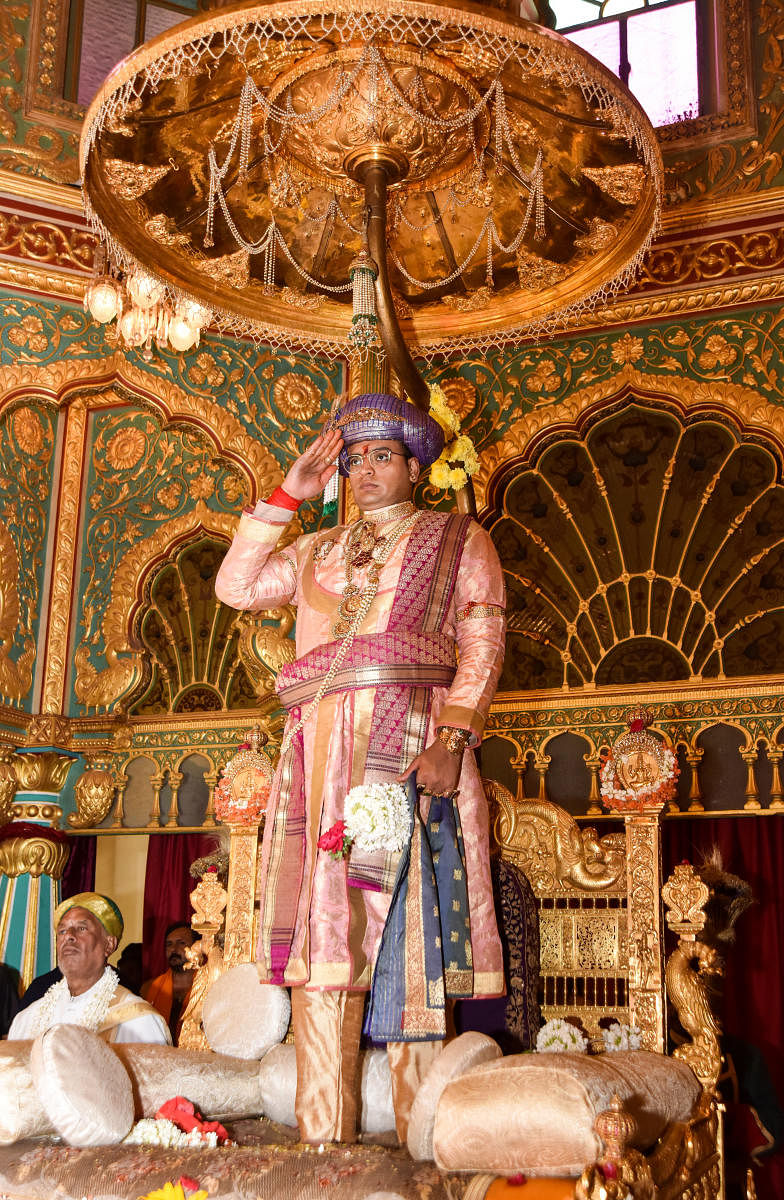
As a youngster, I accompanied my maternal grandfather K B Ramachandra Raj Urs to the palace for the Dasara festivities. It was a treat to watch the Khas Durbar conducted by my (adoptive)father Srikantadatta Narasimharaja Wadiyar. My maternal grandfather, who was also brother-in-law to my father, held the ‘Pattada Kathi ’ (royal sword) and accompanied Srikantadatta Narasimharaja Wadiyar during the durbar.
It used to be a joyful get-together of our relatives, especially cousins. We would play around. We still cherish the memory of sharing Navaratri snacks. Later, when education, school and college became priority, we attended the last three days of Dasara in the palace.
Then, I had no idea that one day I would be the custodian of the legacy and tradition of the palace!
Memories...
As youngsters, we watched the launch of Jamboo Savari from the Durbar Hall of the palace. Those days, only members of our family were allowed to enter the hall to watch the procession. Over the years, the sheen of Jamboo Savari declined, except for the elephants and the golden howdah. We roamed, snacked and watched the procession.
Now, Navaratri and Vijayadashami rituals are more about spirituality. My mother Pramoda Devi Wadiyar supervises the arrangements for the rituals, while I concentrate on the spiritual part. She has been doing this for over four decades and she knows every detail like the palm of her hand. It’s a transformation for me as a symbol of heritage, culture and tradition. It is the cultural part of the dharma of the palace. The rituals trace their origin to our puranas — like Kalika Purana, Vishnu Purana, and Rigveda.
In olden times, the kings and emperors performed Ashwamedha Yagya to check rebellion and to expand their territories. The last kings to perform it were the Chalukyas. Due to the exorbitant expenses and logistics involved, the yagya faded away.
New era
Navaratri and Vijayadashami are celebrated from time immemorial. But, it was taken to the peak by Vijayanagar kings as they had resources. They made it into a military exercise and also a spiritual and cultural event. The festival is celebrated in mid-monsoon, when agricultural activities are complete. Probably, it was the warring season for the Vijayanagar rulers.
The celebration of Dasara in Srirangapatna by my forefathers is not much talked about. But, they were great warriors — like Raja Wadiyar, Ranadheera Kanteerava Narasaraja Wadiyar, Dodda Devaraja Wadiyar, and Chikka Devaraja Wadiyar. However, Dasara was given a new dimension by Mummadi Krishnaraja Wadiyar under his welfare state. It evolved to sophistication and became pro-people under Chamaraja Wadiyar X, Nalvadi Krishnaraja Wadiyar and Jayachamaraja Wadiyar.
His prayers
As the custodian performing the rituals, I pray for the health and prosperity of the state and its people, as enshrined in the shastras. I pray for good rains and good farm produce. On Vijayadashami, the Banni pooja is significant. In olden days, one prayed for victory in wars. The ritual is associated with Arjuna, who worshipped a Banni tree and took out his arms to defeat the Kauravas. Now, we pray for success in all our endeavours.